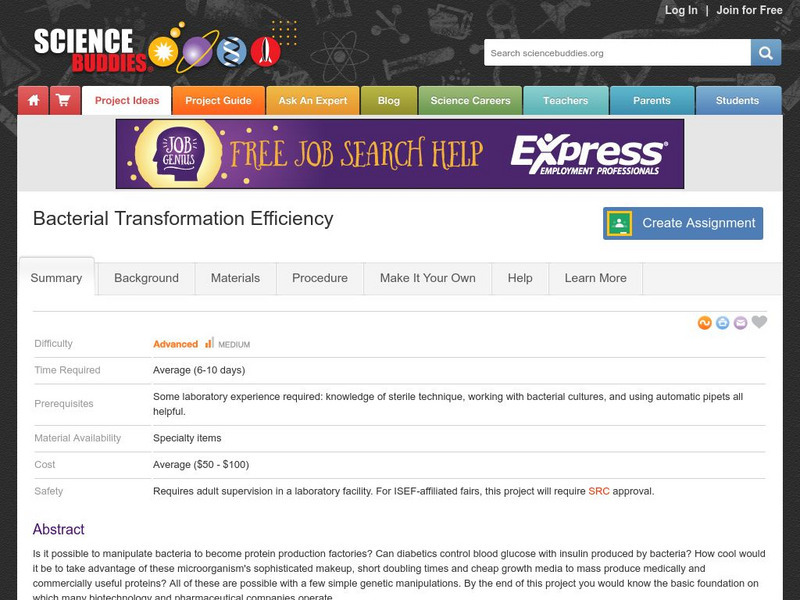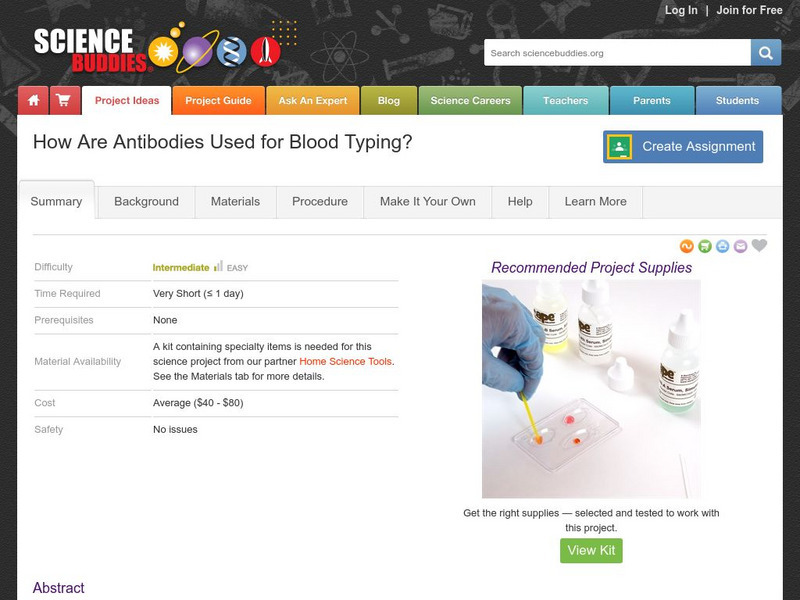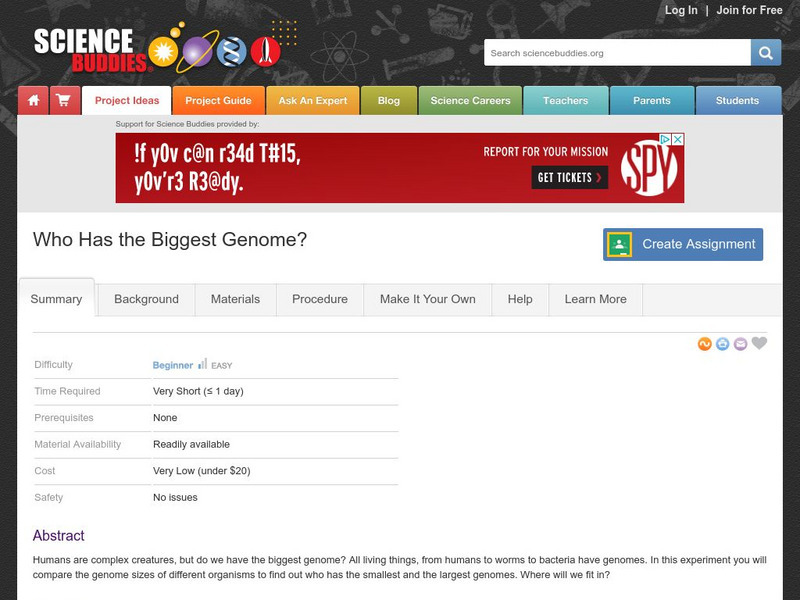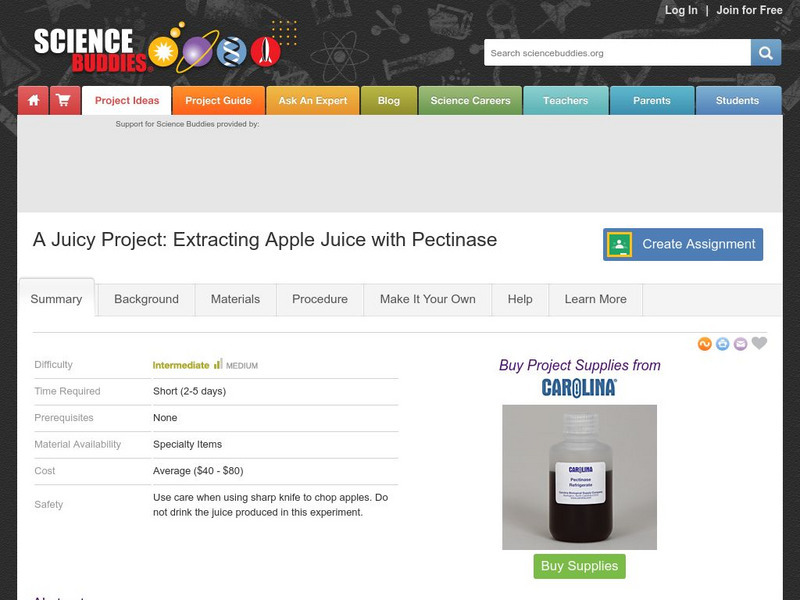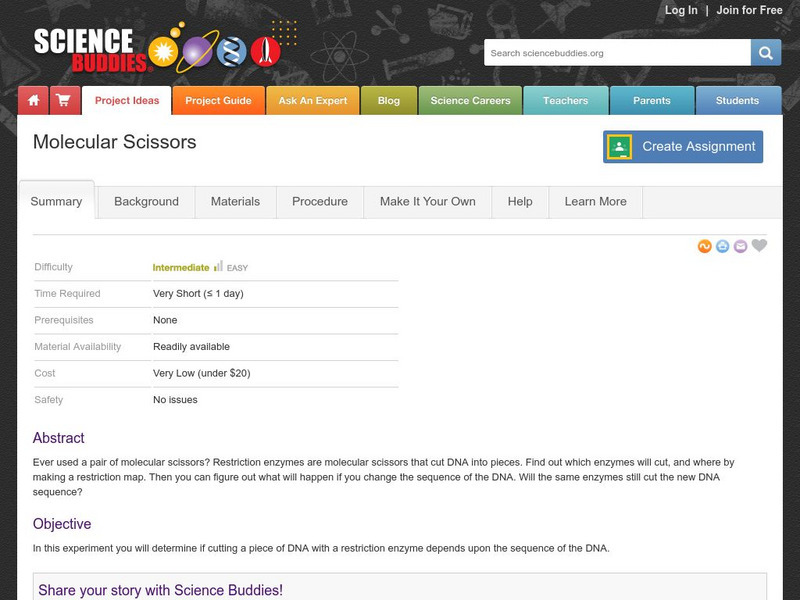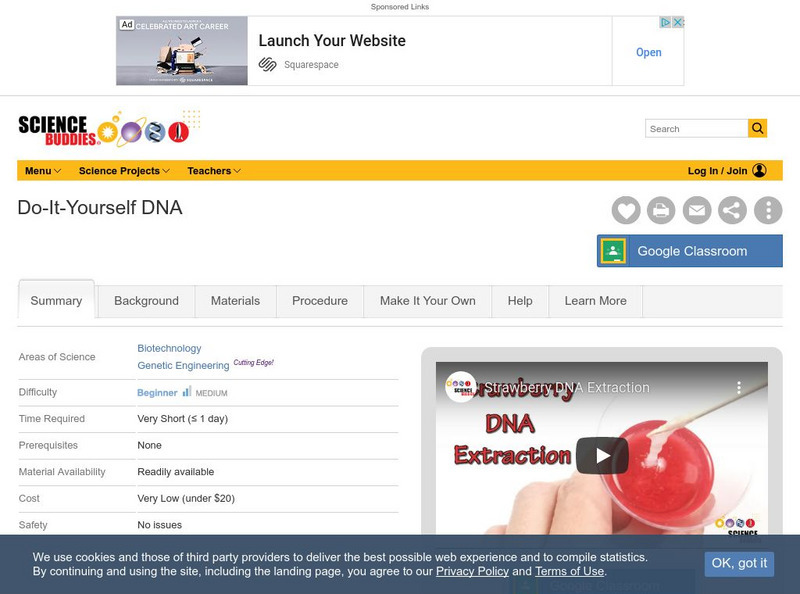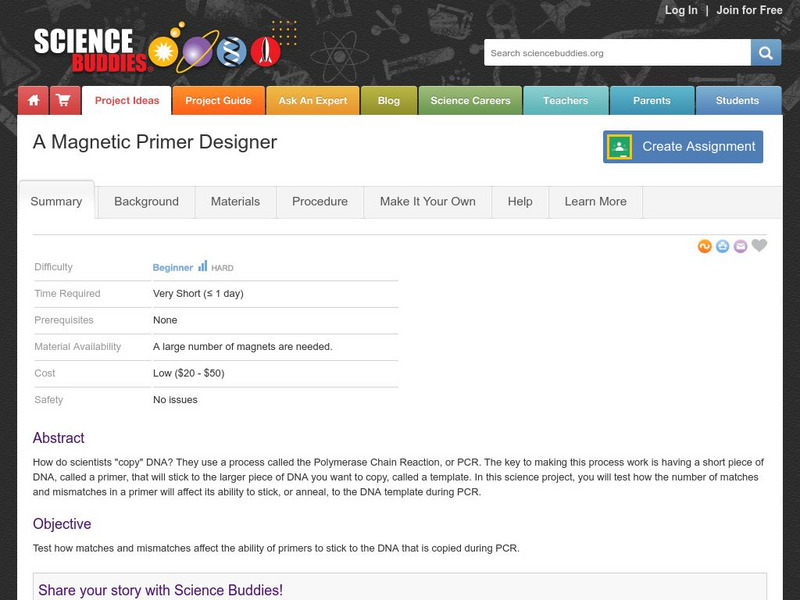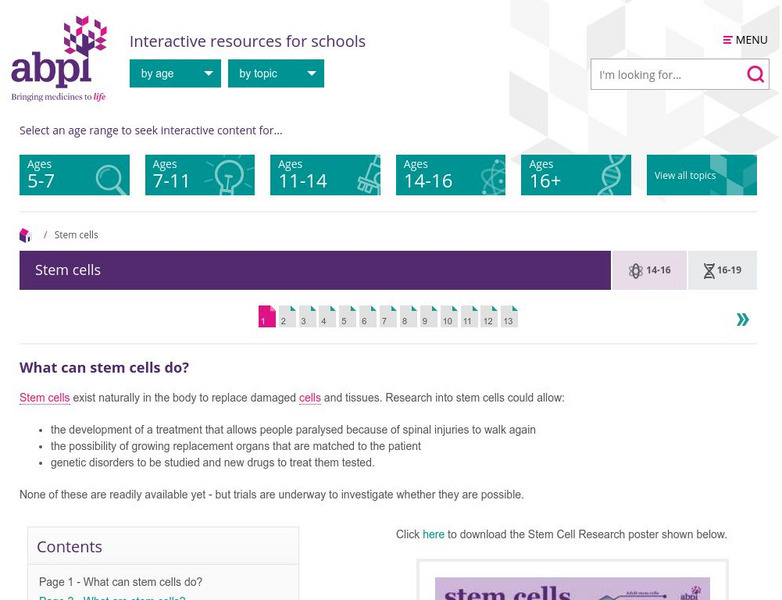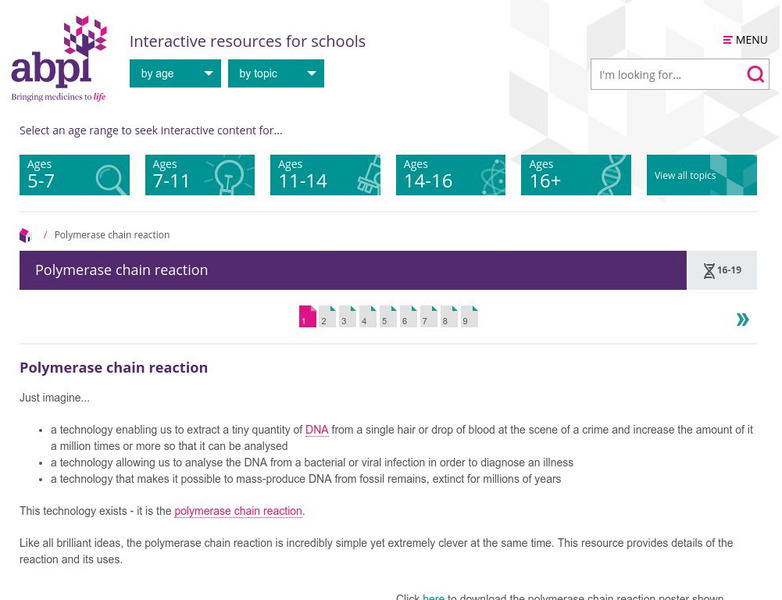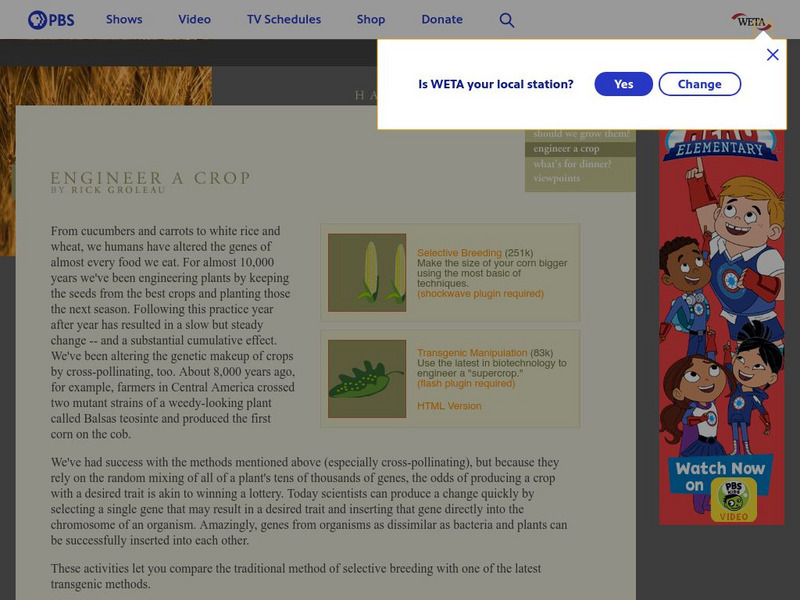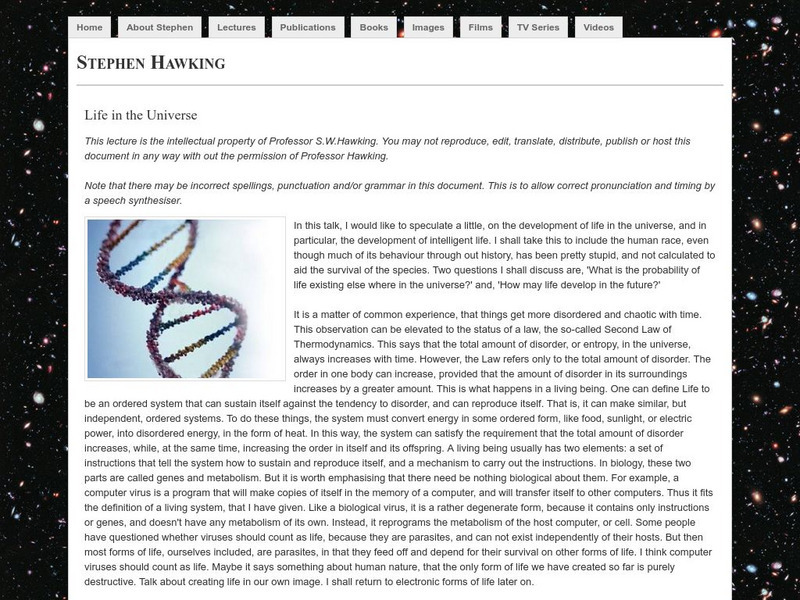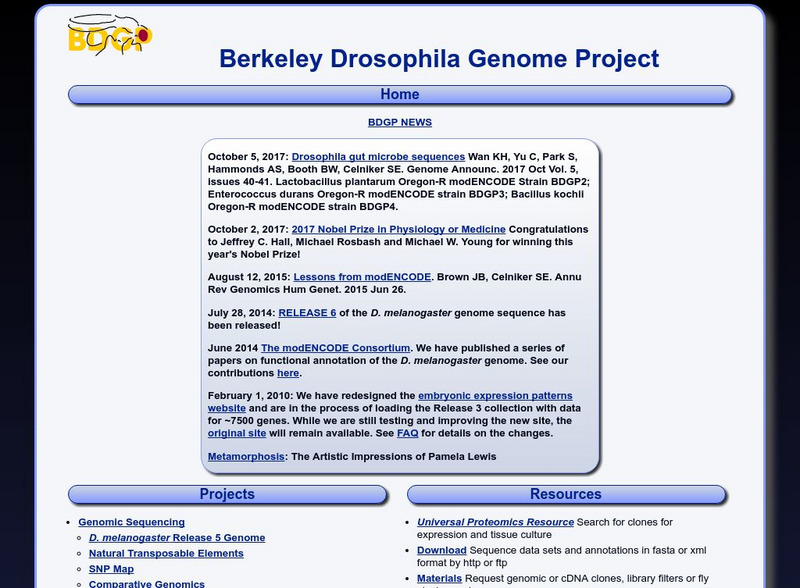Science Buddies
Science Buddies: Bacterial Transformation Efficiency
Is it possible to take advantage of microorganism's sophisticated makeup, short doubling times and cheap growth media to mass produce medically and commercially useful proteins? This is possible with a few simple genetic manipulations....
Science Buddies
Science Buddies: How Are Antibodies Used for Blood Typing?
The human immune system has various ways of responding to an infection caused by bacteria or viruses. Our bodies produce proteins (antibodies) that are highly specific for the infectious agent as a part of our "humoral" immune response....
Science Buddies
Science Buddies: Who Has the Biggest Genome?
Humans are complex creatures, but do we have the biggest genome? All living things, from humans to worms to bacteria have genomes. In this experiment you will compare the genome sizes of different organisms to find out who has the...
Science Buddies
Science Buddies: A Juicy Project: Extracting Apple Juice With Pectinase
This is a basic project on the effect of enzymes on apple slices. The goal of the project is to monitor enzyme activity by measuring the amount of apple juice released by pectinase.
Science Buddies
Science Buddies: Enzyme Catalyzed Reactions What Affects Their Rates?
Enzymes speed up chemical reactions by factors of at least a million. This project investigates some of the factors that affect how fast enzymatic reactions occur.
Science Buddies
Science Buddies: Molecular Scissors
Ever used a pair of molecular scissors? Restriction enzymes are molecular scissors that cut DNA into pieces. Find out which enzymes will cut, and where by making a restriction map. Then you can figure out what will happen if you change...
Science Buddies
Science Buddies: Do It Yourself Dna
All living things have DNA inside their cells. In this experiment you can make your own DNA extraction kit from household chemicals and use it to extract DNA from strawberries.
Science Buddies
Science Buddies: What Makes a Dna Fingerprint Unique?
Do you like solving mysteries? In this experiment, you can find out how a DNA fingerprint can help you figure out whodunit. The answer might just be in the "sequence" of events.
Science Buddies
Science Buddies: A Magnetic Primer Designer
How do scientists "copy" DNA? They use a process called the Polymerase Chain Reaction, or PCR. The key to making this process work is having a primer that will stick to the piece of DNA you want to copy, called a template. In this...
Science Buddies
Science Buddies: The Perfect Marriage of Computer Science & Medicine
Find out the real explanation for why your parents are so weird. Here is a project that lets you explore the internet to find out why your "DNA blueprint" is so important to health and disease. In this project you will use methods that...
Science Buddies
Science Buddies: Liver Stinks!
Sometimes science can be really messy or use pretty disgusting ingredients. That is what it takes to understand how the world works, even if the experiment isn't pretty. If you like chemical reactions that stink and ooze foamy bubbles...
The Association of the British Pharmaceutical Industry
Abpi: Biotechnology
Students read through a complete, interactive lesson on biotechnology. An activity at the end allows students to research and present arguments for or against statements about the ethics of gene therapy and gene manipulation.
The Association of the British Pharmaceutical Industry
Abpi: Stem Cell Research
Students learn about stem cells, and how these cells are used in medical research and treatments. Find out scientific facts, read several case studies, and participate in a group debate activity to explore the ethics of this topic. A...
The Association of the British Pharmaceutical Industry
Abpi: Polymerase Chain Reaction
An interactive, self-paced lesson on polymerase chain reaction. Students read information and watch descriptive animations to aid in understanding. A self-check quiz follows the activity.
American Institute of Biological Sciences
Action Bioscience: The Ecological Impacts of Agricultural Biotechnology
Discover some of the pros and cons of agricultural biotechnology.
PBS
Pbs Teachers:engineer a Crop
Compare the traditional method of selective breeding with transgenic methods. Interactive activities on this site include breeding the largest ear of corn possible and engineering a "super crop".
Popular Science
Popular Science: Something Funny Down on the Pharm
This article investigates the growing industry of pharming, or genetically engineering and growing crops in order to produce pharmaceutical drugs. While there is huge potential for this industry, the article concentrates on the...
PBS
Pbs Bloodlines: Technology Hits Home
This site is a must see for any lesson or unit on biotechnology! It is a companion to the PBS video "Bloodlines: Technology Hits Home," although it can certainly be used without the video. It's a fantastic site that will challenge...
PBS
Pbs Bloodlines: Making Precedent
Excellent site where students are challenged to read several case studies and make choices about what they would do in the situation. After they choose they are presented with some of the consequences that their decision may produce in...
PBS
Nova: Engineering a Crop
This interactive simulation allows you to compare selective breeding with transgenic manipulation to see which one produces a better crop.
Other
Stephen W. Hawking: Lectures: Life in the Universe
This lecture covers the topic of life now and into the future, including the role genetic engineering will play.
Other
Berkley Drosophila Genome Project
This site is dedicated to the mapping of the fruit fly (drosophila) genome.
National Health Museum
Access Excellence: Graphics Gallery of Biotechnology
This site provides simple diagrams on all major topics in cell biology, genetics and biotechnology.
PBS
Pbs: Scientific American Frontiers: Artificial Alan
Provides an update on the primary areas of research in bioengineering and bionics: eyes, ears, liver, hands, skin, blood, cartilage, and tendons.


